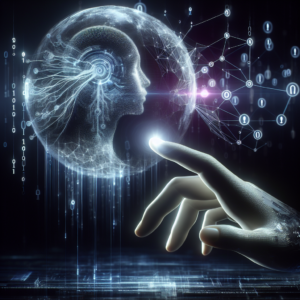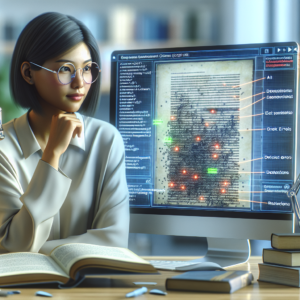Evolving OpenAI’s Structure – OpenAI
OpenAI has consistently been at the forefront of artificial intelligence research and development. The organization is known for its cutting-edge technology, innovative approaches, and commitment to cultivating a safe and beneficial AI. As the AI landscape continues to evolve, so too must OpenAI’s structure and operational methodologies. This article delves into the latest developments regarding OpenAI’s organizational framework and its implications for the future of AI.
The Need for Evolution
As AI technologies advance, the requirements of research organizations like OpenAI increase in complexity. The drive for innovation must be matched by an equally sophisticated operational structure. Here are some key reasons why evolving the structure of OpenAI is imperative:
1. Technological Complexity: The rise of complex models such as GPT-3 has necessitated new research methodologies and team structures to effectively manage various aspects of AI model development.
2. Competitive Landscape: With the increasing number of entities entering the AI arena, OpenAI must adapt to maintain its leadership status.
3. Regulatory Requirements: As governments and regulatory bodies begin to impose stricter guidelines on AI usage and development, organizational flexibility becomes crucial for compliance and ethical considerations.
4. Interdisciplinary Collaboration: AI research increasingly intersects with fields such as neuroscience, cognitive science, and ethics, prompting OpenAI to evolve its collaborative frameworks.
Current Structure of OpenAI
To understand the evolution of OpenAI’s structure, it’s essential to examine where the organization currently stands. OpenAI has adopted a hybrid model comprising several key components:
– Research Teams: Specialized groups focused on specific AI domains such as natural language processing, robotics, and computer vision.
– Policy and Ethics Division: A dedicated team that ensures ethical considerations are integrated into AI development.
– Product Development Units: These teams are responsible for translating research findings into practical applications, ensuring that OpenAI’s technologies can be effectively utilized in real-world scenarios.
– Collaborative Partnerships: OpenAI has established partnerships with academic institutions, industry leaders, and policy makers to foster innovation and address global challenges.
Key Changes in Structure
In light of recent advancements and challenges, OpenAI is making significant changes to its organizational structure to enhance efficiency, encourage innovation, and promote ethical AI development. Here are some of the primary changes:
1. Decentralized Decision-Making: OpenAI is shifting towards a more decentralized model, empowering research teams to make quicker decisions without extensive bureaucratic oversight. This enables faster innovation and responsiveness to emerging trends in AI.
2. Increased Inter-Department Collaboration: To foster a more interdisciplinary approach, OpenAI is encouraging collaboration between research teams and policy specialists. This aims to bridge the gap between technical development and ethical considerations, ensuring that innovations align with societal values.
3. Emphasis on Transparency: OpenAI is enhancing its commitment to transparency by establishing clearer channels for external communication and feedback. This involves regular updates on research progress, ethical guidelines, and the organizational mission.
4. Focus on Diversity and Inclusion: OpenAI recognizes the importance of diverse perspectives in AI development. The organization is actively working to create a more inclusive environment that reflects a wide range of experiences and backgrounds.
The Future of OpenAI
The evolving structure of OpenAI sets the stage for a future where AI can be developed and integrated in ways that are safe, ethical, and beneficial to society. Here are some anticipated outcomes of these structural changes:
1. Enhanced Innovation: By adopting a decentralized approach, OpenAI is likely to accelerate innovation, enabling teams to explore novel ideas and technologies without the constraints of traditional hierarchies.
2. Stronger Ethical Standards: With a dedicated policy and ethics division, OpenAI is positioned to lead the charge in developing AI technologies that prioritize ethical considerations, fostering public trust in AI applications.
3. Broader Impact: The emphasis on collaboration with various stakeholders means that OpenAI can address a wider array of global challenges, ensuring that AI technologies are applied in ways that benefit humanity at large.
4. Adaptability to Change: An evolved structure will better equip OpenAI to navigate the rapidly changing landscape of AI, allowing it to pivot and adapt to new challenges and opportunities as they arise.
Conclusion
As the AI field continues to evolve, OpenAI is committed to adapting its structure to meet the challenges of tomorrow. By fostering a decentralized, collaborative, and ethical approach to AI development, OpenAI aims to lead the way in creating technologies that are not only innovative but also responsible. The changes in OpenAI’s organizational framework reflect a vision for a future where AI can thrive alongside human values, ultimately contributing to a better world for all.
In conclusion, the evolution of OpenAI’s structure represents a crucial step in the journey toward a more inclusive, transparent, and responsible AI ecosystem. As we look to the future, it is clear that OpenAI is poised to play a pivotal role in shaping the trajectory of artificial intelligence in a way that respects both technological advancement and ethical principles.



